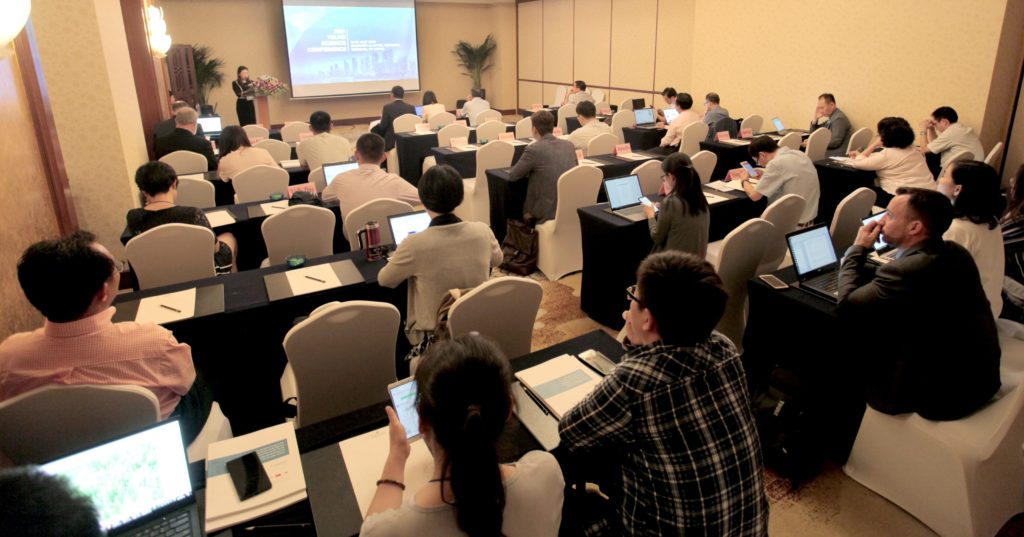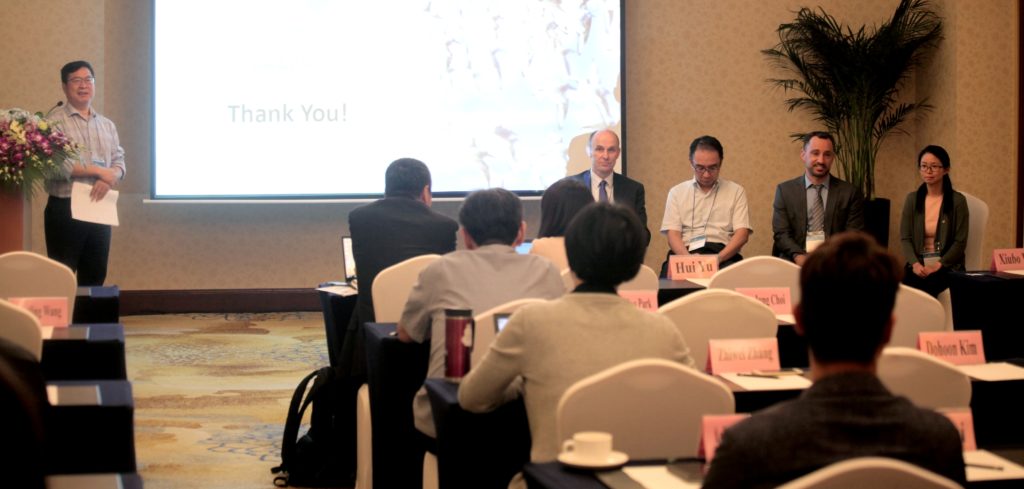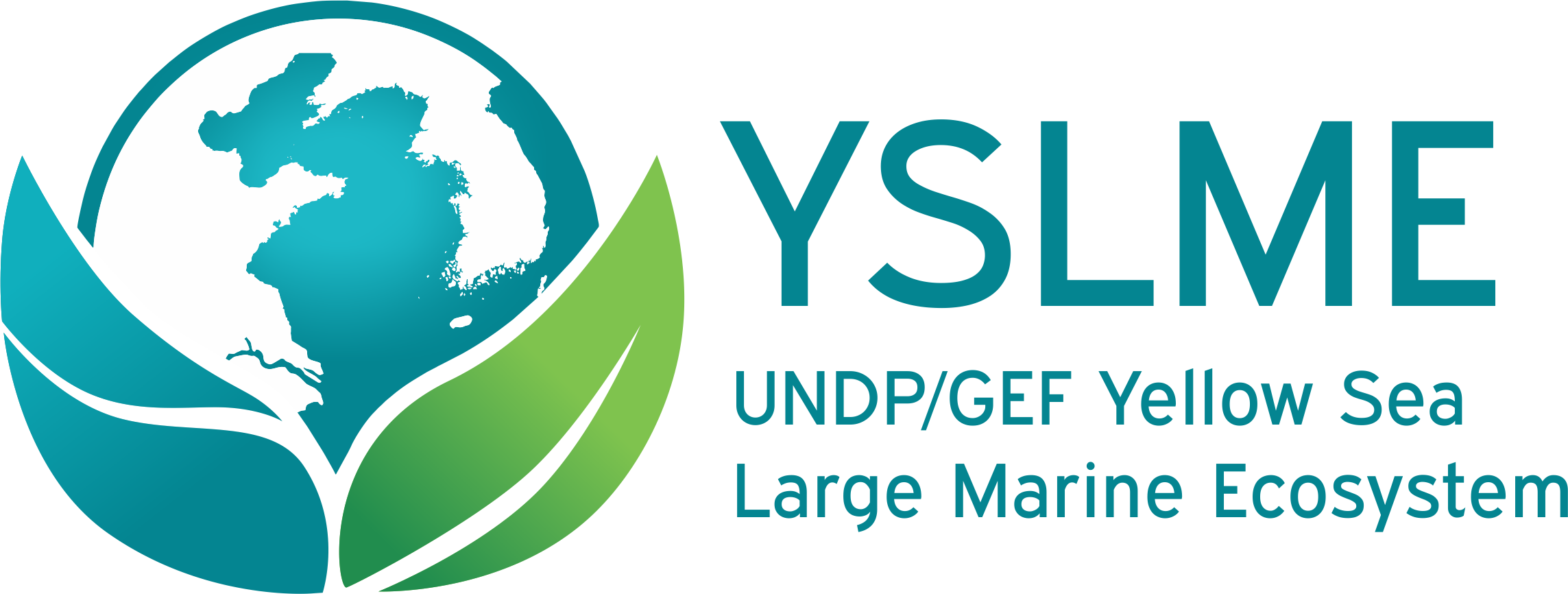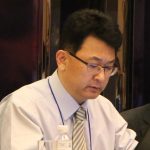
To effectively respond to the changing circumstances and chart the future of biodiversity in YS, UNDP/GEF YSLME Phase II Project is supporting the countries bordering the Yellow Sea to develop and implement a regional biodiversity conservation plan up until 2030. The presentatios/inputs from parallel event of Charting the Biodiversity Conservation in the YSLME up to 2030 at the 3rd YSLME Science Conference aims to support the development and adoption of YSLME Biodiversity Conservation Plan covering 2020-2030 to contribute to the implementation of SDGs.

DAY 1
In session 1 of the YSLME biodiversity forum, speakers mainly talked about national and regional priorities in applying ecosystem-based management in China, Korea, DPRK Korea. They reflected on the post-2020 biodiversity conservation framework on the regional and global scale. During presentations, speakers touched world heritage, transboundary collaboration, capacity building and wetland restoration multiple times.
At the beginning, Mr. Hui Yu from the Division of Marine Protected Areas of Ministry of Natural Resources, China and Ms. Hyung Won Kim from the Marine Environment Policy Office, Ministry of Oceans and Fisheries (MOF), RO Korea, gave the opening remarks. They both emphasized the significance of marine biodiversity conservation in terms of blue economy, food sources and climate change and introduced the current situation of biodiversity conservation in China and Korea. Dr. Zhaohui Zhang, FIO/MNR, PR China, served as moderator.
Session 1: Global, regional and national priorities in application of ecosystem-based management of the YSLME was moderated by Dr. Dirk Lamberts, Environment Specialist, UNOPS/YSLME. Dr. Fangyuan Qu, FIO/MNR, PR China, served as rapporteur.
Dr. Linlin Zhao from the First Institute of Oceanography (FIO), MNR, China, gave a presentation of the current MPA development in China and shared a case of an MPA network which involves six MPAs. He introduced the ministry reform in 2018 and explained the State Council’s current working priorities in building the nature reserve system with national parks as the main body. When talking about the next step for MPA development, Mr. Zhao said that the new agenda for building MPAs is to prioritize geographical distribution and solve the MPA overlapping issues and start building new MPAs.
Mr. David Melville from Pukorokoro Miranda Naturalist’s Trust, New Zealand talked about his research of shorebird population in the West/Yellow Sea. He identified the ecological threats due to land claims, aquaculture and overexploitation. Mr. Melville hoped that DPR Korea will consider nominating sites for inscription on the World Heritage List as part of a multi-lateral West (Yellow) Sea listing. “The East Asian-Australasian Flyway has more endangered and threatened waterbird species than any other flyway,” said Mr. Melville, as he shared the status of globally significant biodiversity in north coast of Yellow Sea in DPR Korea. The more a shorebird relies upon the West/Yellow Sea, the greater the rate of population decline. Surveys of shorebirds conducted in the Democratic People’s Republic of Korea (DPRK) between 2009 and 2019 have identified sites of international importance for nine species. The wetland inventory of the DPRK has identified 24 sites in the West Sea that meet Ramsar listing criteria but all face some threats, in particular land claim for aquaculture and overexploitation.
Dr. Jilong Li of CAFS, MARA, PR China shared his work on marine mammals and fish species conservation in the Yellow Sea. He shared the current policy framework that regulates the marine conservation in China and China’s major protection efforts including: fishing ban and closed fishing season; fishing gear and method control; Fishing efforts control; stock enhancement and releasing; national aquatic germplasm resource reserves; Harbor seal conservation action plan (2017-2026); reserves for the Protection of Endangered Aquatic Wildlife. Challenges include water pollution, human activities, overfishing, global warming, and illegal fishing. Dr. Li hoped that marine mammals and fish species conservation in the Yellow Sea is always to be on their way.
During the panel discussion moderated by Dr. Lamberts, speakers reflected on their respective priorities on the post-2020 biodiversity agenda for the YSLME. Dr. Zhao emphasized that marine biodiversity has been mainly affected by human activities, and therefore it is crucial to regulate human activities especially along the coasts. Now governments make rules and encourage scientific research to identify important spots of marine conservation. Dr. Zhao hoped that we can find out how to use resources in a sustainable way and we can rely on each other to protect marine biodiversity.
Mr. Melville shared the DPRK Korea’s interests in conducting monitoring and data collection. He shared the extent of the limited conditions in DPR Korea now in terms of Internet access and international exchange. He suggested sustainable development in the west coast and shorebird conservation be prioritized now.
Dr. Li said that it depends on where you stand especially when conservation is related to different stakeholders. He thought that responsible fisheries management is crucial and emphasized that the most important thing now is habitat protection.

The afternoon session was moderated by Dr. Xiubo Yu, IGSNRR/CAS, PR China.
Dr. Dirk Lamberts from UNDP/GEF YSLME Phase II Project presented the current preparations for the post-2020 biodiversity framework and the status of the discussions relevant to the 2050 vision for biodiversity. He thought that the CBD and post-2020 global biodiversity framework would provide the hyper structure for biodiversity conservation in the YSLME. He also admitted the challenges of matching YSLME specific arrangements with the CBD goals as specified in the post 2020-framework.
Dr. Takafumi Yoshida from Coastal Environmental Assessment Regional Activity Centre (CEARAC)/Northwest Pacific Action Plan (NOWPAP), presented the work of NOWPAP on marine biodiversity conservation in the Northwest Pacific region and shared future goals. He said that in 2020-2021, new projects for regional action plan on marine biodiversity conservation would be started by 2023, and RAP BIO would be developed and approved by member states.
Mr. Raphaël Glémet, IUCN Asia Regional Office, emphasized the significance of mudflats according to IUCN situation analysis and IUCN’s past experience of bringing different stakeholders in conserving the environment and harnessing nature based solutions. As a next step, IUCN will update IUCN situation analysis, support assessment of ecosystem services and hold joint workshop of coastal wetlands managers.
Miss Vivian Fu from East Asian-Australasian Flyway Project (EAAFP) shared her work involving the flyway network and underlined the importance of Yellow Sea as the center of the flyway network. She talked about the loss and decline of mudflats and suggested transboundary collaboration among countries and stakeholders in flyway network. She also shared the recent announcement that migratory bird sanctuaries along the coasts of the Yellow Sea-Gulf of China have been inscribed into the World Heritage list with 148,432 ha covered.
Dr. Yu moderated the afternoon panel discussion. Speakers reflected on post-2020 biodiversity agenda for the YSLME and talked about their thoughts on international collaboration for achieving biodiversity conservation goals.
Dr. Lamberts said that even though 30% of the sea protected by 2030 is a rather high level objective statement, it creates momentum for better marine biodiversity conservation. At this point, it is crucial to specify regional goals under the post-2020 framework.
Miss Fu said that NGOs from different countries have different working styles and EAAFP can provide more chances for these partners to work hand in hand. She also though that Yellow Sea needs to be prioritized in the resource allocation process and stakeholders should work together to build a sharing and friendly atmosphere.
Dr. Yu echoed that building the work network is important for building common sense and sharing experience and lessons learned. He said that management should prioritize elements such as local communities, national benefits and Yellow Sea whole ecosystem.
Mr. Glémet added that it depends on how we perceive the ecosystem. He said that even though we are familiar with the development, there is still room for improvement. Therefore, we could consider ecosystems as a tool for development. Even though diplomacy is involved among different countries, projects such as YSLME Phase II Project could help create dialogues among different countries as the ecosystem is the common heritage for all of us.
Dr. Yoshida said that sharing success outputs with other partners and thinking about the future, and not only about the network, are significant.
Asked about his thoughts on the session, Mr. Yinfeng Guo , Chief Technical Adviser and Project Manager of YSLME Phase II project, gave high remarks about the session. He said that protecting shorebirds is not enough, this project is more about transboundary collaboration and communication. He added that it is also important to pay attention to elements such as invasive species through aquaculture, endangered species and community livelihood. Mr. Guo emphasized the crucial value of multi-stakeholder participation and community engagement and expressed his wish for good will in marine biodiversity conservation.
Dr. Yu, in concluding the session, asked all the participants how we can come out with a conservation target for marine ecosystems. Mr. Melville said even though we might have certain number of MPAs, their monitoring and management capacity might not be strong enough to ensure the protection. As effective conservation is really important, international dialogues among member countries should be made most of to improve management effectiveness.

DAY 2
Continuing the YSLME Biodiversity Forum, Session 2 opened with focusing on the framework of biodiversity conservation planning in YSLME up to 2030. The Session was moderated by Dr. Bong-Oh Kwon of Seoul National University, RO Korea. Mr. Young Nam Kim of KOEM, RO Korea, served as the rapporteur.
Under this session, the proposals on YSLME Biodiversity Conservation Plans in PR China and RO Korea were shared.
Prof. Zhaohui Zhang from the First Institute of Oceanography, MNR, PR China, highlighted the various pressures on the biodiversity of Yellow Sea, including: overfishing; sea reclamation; pollution from land-based activities, mariculture, oil spill; red tide and green tide; invasive species, and climate change. In addressing these challenges, the proposal for the YSLME Biodiversity Conservation Plan in China covering 2018-2030 was developed, which aims to ensure better conservation of the Yellow Sea. The proposed BD Plan for China covers 7 Strategic Tasks and 15 Action Programs. From 2018-2025, the plan identified short-term targets focusing on: completion of background surveys and assessment of Yellow Sea area with effective monitoring in place; nature reserve system with completed functions established; and improved biodiversity monitoring, assessment and early warning systems, entry and exit management systems for biological species resources, and access. While the long-term targets include: increase in protected areas; ecosystems, species and genetic diversity protected; and sound legal system on biodiversity conservation policies and sustainable use of biological resources in place.
Dr. Won Tae Shin, CEO of Global Ocean Inc., presented on the YSLME Biodiversity Conservation Plan of RO Korea, which was developed based on the 2nd National Marine Biodiversity Management Plan of RO Korea 2019-2028 developed in 2018 in accordance with the Conservation and Management of Marine Ecosystem Act. The YSLME Biodiversity Conservation Plan of RO Korea (2019-2028) comprises of 5 strategies, 16 Actions and 106 Activities. The strategies are: Marine Habitat Protection; Marine Species Protection and Restoration; Enhancing the Benefits of Marine Ecosystem Services; Improving the Governance on Marine Ecosystem Management; and Enhancing Collaboration for Marine Ecosystem Conservation.
The session noted a number of similarities on both the proposed BD Plans for PR China and RO Korea. It is envisioned that even with the completion of the YSLME Phase II Project at the end of 2019, cooperation between the two countries in addressing biodiversity would continue and further strengthened through the proposed YSLME Commission. Under such mechanism both countries will provide funding support. On biodiversity efforts, based on the two national BD Plans, a unified biodiversity conservation program for YSLME will be developed.
Session 3 focused on the strengthening of the YSLME MPA Network. Dr. Zhaohui Zhang served as the moderator, while Dr. Linlin Zhao served as the rapporteur.
Dr. Zhaohui Zhang presented the gap analysis in MPA in PR China. Dr. Zhang emphasized that the gap analysis on MPA in China provided data which will be used in identifying other potential areas in the future.
Dr. Young Nam Kim from KOEM, RO Korea talked about MPA and marine ecosystem conservation and management in RO Korea. Currently, 28 MPAs (total area of 1,777.449 ㎢) have been designated in ROK. These MPAs are covered by the Conservation and Management of Marine Ecosystem Act and the Wetlands Conservation Act. MPA management in Korea includes management and evaluation, monitoring and database construction, and implementing CEPA methods. KOEM’s Marine Protected Areas Center, for instance, facilitates and manages government projects through official contract. Zoning and self-organizing regional management plan have also been recently established and is expected to be implemented in the coming years. In the National Marine Ecosystem Monitoring, Korea’s ocean was divided into two areas and general status of the marine ecosystem has been studied once every two years. From this, core areas have been selected and researched every year, establishing the basis to effectively diagnose the marine ecosystem. Other biodiversity-related activities include habitat restoration, protected species rescue program.
During the discussion, it was further clarified that the gap analysis on MPA in China provided data which will be used in identifying other potential areas in the future. In RO Korea, it was only in recent years that description of no-take zones were included in the regulation for MPAs, but remains to be further strengthened. These initial efforts, however, are already showing promising developments. Further benefits of MPAs particularly for livelihood development need to be further assessed and considered in RO Korea.
The session also discussed promotion of citizen science and use of data generated by citizens. In the case of RO Korea, their national program covers stations for seabird monitoring/citizen monitoring program for all MPAs in the country. Data from citizen monitoring goes to local governments who established MPA committees and management plans. In China, there are some initiatives where citizen science program is available but is currently not included in the marine monitoring program.
Session 3 was further continued with the presentation of Dr. Xiubo Yu, IGSNRR/CAS, PR China, on coastal wetland changes and priority areas for waterbird habitat conservation in the Yellow Sea Ecoregion in PR China. Dr. Yu emphasized that as the YSLME is a typical macrosystem, understanding of macrosystem needs a holistic approach by integrating of ecosystem monitoring, bird and fishery survey, big data and deep learning, as well as biodiversity assessment and conservation mapping. Better understanding of the coastal wetland issues and informing the decisionmakers and public are affective approaches to achieve the conservation targets. Citizen scientists could also contribute more to bird and habitat conservation with applicable database and mobile APP.
Mr. Yong Lu, Senior Technical Officer, International Wetlands, presented on migratory bird species in Yellow Sea. The wetlands around Huanghai Sea and Bohai Sea in China are an important part of the East Asian-Australasian Flyway and serve as key stations for migrating waterbirds. In order to determine the current status and diversity of waterbirds around Huanghai Sea and Bohai Sea in China, a survey was conducted by 30 institutions using line transects and point count methods from 2016 to 2018. During the surveys, 2,588,603 individuals (137 species, 17 families, 8 orders) were recorded. Among these species, 80.7% (53 species) were shorebirds. The abundance of waterbirds in different wetlands was significantly different, and the number of individuals among species varied greatly. This study showed that Huanghai Sea and Bohai Sea Region were important stopovers for shorebirds and some rare bird species, such as Baer’s Pochard, Spoon-billed Sandpiper and Oriental White Stork. Mr. Lu believes that as ecological civilization in China is progressing, conservation of the wetlands and the biodiversity in Huanghai Sea and Bohai Sea Region becomes inevitable.
Mr. Li Zhichuang from Liaoning Ocean and Fisheries Science Research Institute, PR China shared the spotted seal and finless porpoise conservation plan in PR China. The breeding area is located in Liaodong Bay, southernmost of eight breeding areas around the world. Liaodong Bay breeding area and Peter the Great Gulf breeding area are relatively independent species.
At present, over 1.56 million hectares water area have been involved in spotted seal reserve. The fishery department completes saving and curing more than 200 spotted seals, releasing 150 seals in six times. The Spotted Seal Plan Protection contains six major plans: spotted seal resource and habitat protection; improving ex situ conservations; protective and management capability; scientific research and professional training; international cooperation; protective education and public participation.
The session discussion further clarified that the waterbird species list of China is still based on the 1998 list, and updating of the list is still ongoing. On the spotted seal conservation, it was confirmed that the YSLME Project has provided funding of USD 90,000 and satellite tracking.
As for MPA, at the macro level it was suggested that sister sites may be established in order to promote mutual understanding on MPA sites in China and RO Korea. At the micro level, particularly on monitoring and conduct of surveys it would be good to be able to have comparable information.
A clarification was also sought regarding the possibility of setting joint Ecologically or Biologically Significant Areas (EBSA) in Yellow Sea. It was indicated that each countries identified EBSAs under CBD, but establishment of a joint EBSA may be difficult.
Session 4 focused on coastal and marine ecosystem restoration technologies and evaluation. The session was moderated by Dr. Won-Tae Shin, while Dr. Aslan Hwanhi Lee of RO Korea served as the rapporteur.
Mr. Bo Guan, IOCAS, PR China presented on improving the effectiveness and impacts of coastal restoration projects. Based on an IPCC 2007 report, due to unique geographical locations, the coastal zones are the most vulnerable ecosystems to the impacts of climate change, and over the past 150 years, more than half of the global wetlands have degraded due to climate changes and human activities. When China and RO Korea became contracting parties to the Ramsar Convention more wetlands were protected and restored. In the Yellow River Delta, for instance, a new restoration technology architecture based on microhabitat modification and water level control was developed. The project has showed significant improvement in the wetland function. However, several challenges remain including the need to improve the monitoring network, conservation and compensation system, special laws and regulations and the need to further enhance public awareness on wetland conservation.
It was clarified that while reference data or information were not presented, the ecological restoration initiatives have reference data, and that three projects have been completed showing good developments.
Dr. Bong-Oh Kwon from the Seoul National University of RO Korea, provided information on coastal reclamation and restoration in RO Korea. He shared a study showing that the total area of the Yellow Sea coastal wetlands has been considerably reducing for the past 36 years. According to the ecosystem services valuation for the Yellow Sea, a total loss was estimated as ~USD 8 billion/year. Recently, the public values and ecological values of tidal flats have been discovered and widely recognized in terms of environmental roles and/or ecological resources. The RO Korean government has sustainably propelled plans to restore tidal flats destroyed in 2009. As of 2018, a total of 10 tidal flat restoration projects were completed. As a second stage of national policy for tidal flats, the National Master Plan for Utilizing Tidal Flats as Ecological Resources was launched in 2015. The project ended with only nine sites being restored over a nine-year period. The project will also promote sustainable tidal flat fishery and boost local customized ecotourism through branding the restored tidal flats that will benefit local residents.
It was further clarified that the loss of economic value was calculated based on the four categories of ecosystem services. The restoration provides the following benefits: job creation, increase in fisheries, and ecotourism.
Dr. Gyung Soo Park from Anyang University, RO Korea, presented on effective and simple statistical approaches for the interpretation and identification of ecosystem management targets from large volume data sets. Mr. Park gave an example of a rational interpretation of complex ecological data through analysis of distribution characteristics and abnormalities of ecological survey data. The main research items included establishing background concentration by ecological element on the Korean Peninsula coast, drawing indicators for ecosystem monitoring and establishing an adaptive management system, considering the distribution characteristics of each ecological data. He showed that data screening process such as outlier testing and the use of secondary data like ecological indices and simple ratio between two variables can reduce the variation of raw data. Summarizing outliers by space and time can also be a good example of monitoring targets through in-depth verification process.
The session recognized its usefulness but also emphasized that use of outliers will also depend on relative scale as well as on different parameters of area to be studied.
Dr. Heung Sik Park from KIOST, RO Korea, shared their study on the potential of Korean vegetated coastal ecosystems for greenhouse gas abatement through blue carbon management. Korean blue carbon focuses on the current status of salt marsh and seagrass vegetation in addition to the carbon deposition that occurs in the wide tidal flats spreading in the southwestern coast where it is having high blue carbon potential sequestration. Korean blue carbon studies have started from 2017 funded by government through KOEM, mainly interested in Korean blue carbon calculate to the current amount as well as annual accumulation of domestic blue carbon on tidal flat and seagrass bed. Field surveys will be conducted in at least 25 sites around the Korean peninsula. Salt marsh vegetation so far emphasized fundamental structure such as distribution and density; less research on species-based biomass or on shore seagrasses to estimate the amounts of blue carbon. Spatiotemporal estimates of blue carbon amounts by habitat with measuring total biomass and carbon content of dominant salt marsh vegetation were done as well.
During the discussion, it was cautioned that while some benefits may be derived from the spartina, some studies also showed possible negative effects. It was also emphasized that while salt marshes do not provide new to carbon sequestration, it is important to . pursue salt marshes restoration so as to get more or new contribution from carbon sequestration and carbon content of dominant salt marsh vegetation were done as well.
During the discussion, it was cautioned that while some benefits may be derived from the spartina, some studies also showed possible negative effects. It was also emphasized that while salt marshes do not provide new to carbon sequestration, it is important to . pursue salt marshes restoration so as to get more or new contribution from carbon sequestration.
To access the Day 1 YSLME Science Conference report, click http://www.yslmep.org/wp-content/uploads/2019/06/DAY-1-YSLME-Science-Conference-Daily-Report.pdf
To access the Day 2 YSLME Science Conference report, click http://www.yslmep.org/wp-content/uploads/2019/06/DAY-2-YSLME-Science-Conference-News-update.pdf
To access other conference details, including presentations and abstracts, click http://www.yslmep.org/?mec-events=3rd-yslme-science-conference.










